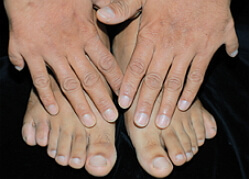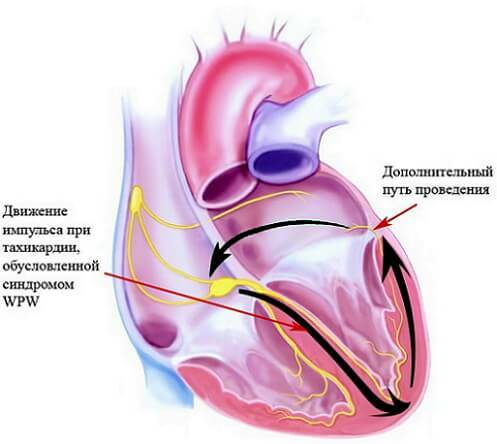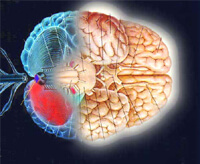Polydactyly
 Polydactyly is an anatomical abnormality characterized by an inborn change in the number of toes on the foot or leg. This disease has a double origin. In the first case, splitting of fingers occurs along their rudiments, and in the second - rudiments or atavism appear.
Polydactyly is an anatomical abnormality characterized by an inborn change in the number of toes on the foot or leg. This disease has a double origin. In the first case, splitting of fingers occurs along their rudiments, and in the second - rudiments or atavism appear.
The development of a double nail phalanx or small dermal appendages of the fingers is also considered polydactyly. Very often this congenital malformation occurs in the form of six fingers on one limb. The additional finger is mainly located inside or outside the edge of the foot or hand. As a rule, such additional fingers are not developed at all.
Polydactyly, the causes of
An hereditary factor, as it turned out, is one of the main causes of this defect. In some families, the family form of polydactyly occurs, which is transmitted by an autosomal dominant type of inheritance, but there may be an incomplete penetrance. This is when in a chromosomal set the gene of polyalpia is present either in the father or in the mother, although they remain absolutely healthy by external signs. Hence the probability of a child with physical disabilities from such parents is close to 50%.
If, during pregnancy, the fetus was exposed to any toxic substances( for example, taking certain drugs that have teratogenic effects, that is, capable of disrupting the formation of tissues or organs), then polydactyly may occur during the development of the fetus, hence becoming congenital. Such an effect of toxins leads to a delay in the programmed death of one type of cells and the production of others. In this case, with polydactyly, additional fingers are formed.
In addition, the formation of polydactyly can be influenced by adhesions located inside the envelope that surrounds the fetus, which leads to a child's malformed development.
Many complex chromosomal abnormalities( Patau syndrome) and gene syndromes( Meckel, Lawrence, etc.) have all the symptoms of polydactyly. In medical practice, there are almost 120 syndromes, which are accompanied by this pathology.
The reasons for the emergence of isolated polydactyly are not yet clear. Genetic scientists suggest that this congenital anomaly is formed in 5-8 weeks of pregnancy, for which the increase in the number of mesoderm cells is characteristic.
Polydactylyum in children
Immediately in the maternity hospital, after birth, the newborn is necessarily inspected by a pediatrician. If the child was born with deviations in the form of polydactyly, then the doctor immediately without much difficulty will be able to diagnose it. But in those cases when it is necessary to determine the place from which the extra finger extends or to distinguish it from the makeweight in the form of a skin, then the X-ray method of investigation is used.
In children, polydactyly is considered in the form of three types, which depend on the location of the additional finger.
Such polydactyly, as postaxial, is characterized by the fact that the sixth finger is located behind the little finger, and with preaxial polydactyly - in front of it. In the event that the additional finger is well developed and connects to the fifth metacarpal bone, polydactyly is hereditary. With a congenital pathology, the child's finger is undeveloped, represents a dermal outgrowth and has only one or two phalanges.
Another of the most common developmental malformations in children is the foot polydactyly. In this case, a pathology develops, as a result of which the number of fingers, phalanges or metatarsal bones increases. With such defects, deformation of bones, joints, tendons and ligaments, which are characterized by the affected segments. Especially it progresses with the growth of the child, which can cause a complication in his treatment, as well as further rehabilitation.
Defects of the foot in the form of anatomical and functional changes adversely affect the child's psyche, develop in it inferiority complexes, it becomes necessary to wear orthopedic shoes and limit oneself in physical development.
Polydactyly treatment
For treatment of polydactyly, only surgical operation is advisable. This is mainly done solely by pursuing the elimination of psychological causes, and also because of the physical discomfort of the child.
In some cases, additional fingers on the hands or feet may indicate the presence of some other serious diseases. Therefore, an additional examination of the child may be required before the operation.
The main task of the surgeon is not only to remove the defect, but also to create an aesthetic appearance of the hand or foot, as well as their proper functioning.
Operative treatment, for example, foot polydactyly, doctors insist to conduct at an early age. Because at this time the baby's foot has good plasticity and it can be remodeled without complications. And also the blood circulation process and all the functions of the neuromuscular apparatus are restored very quickly. Therefore, surgeons recommend the removal of fingers-rudiments immediately, in the first months of life of the child.
Choosing a specific tactic or procedure for the operation, it is very important to conduct additional special studies. For all types of polydactyly, an X-ray examination remains mandatory, which allows to establish the character of changes in the bones, different variants of joining the "sixth" finger, or one of the phalanges with the main finger. Of course, it is also necessary to investigate peripheral circulation.
Before carrying out special research methods( renography, capillaroscopy, etc.), the usual method is used, which consists in applying a tourniquet at the base of the receding finger. If the paleness of the main finger appears, and it does not disappear quickly, that is, there is a certain risk in disturbing the circulation after removing the extra finger. This suggests that between the main and additional fingers are common blood vessels. But, if all this is taken into account in the surveys, then the outcome of the treatment of polydactyly is almost always favorable.
It is important that surgery is done on time. And this, in turn, will enable the child to master all skills properly and develop motor skills.
Polydactyly, operation
The choice of surgical treatment for polydactyly is based on several points: congenital foot or hand defects, patient age, and certain pathological changes in the fingers or metatarsal bones that accompany polydactyly.
Complex forms of operations involve not only the removal of the additional segment, but also the reconstruction, and then the restoration of the osteoarticular and tendon-muscle apparatus of the metatarsal bones.
Children such operations are recommended to spend up to a year, until deformations of the secondary plan appear. And already the processes of changes and rehabilitation are more suitable for older children.
Foot polydactyly operations are divided into methods such as the removal of fingers in the central section, from the outer edge and the inner. In the first variant, the underdeveloped fingers are removed if they occupy the wrong anatomical position.
Polydactyly of the foot of the outer and inner margins is subjected to surgical excision and removal of the second and seventh rays on the foot, when it has projections of a cuboidal margin and a wedge-shaped additional bone.
To carry out such operations, no special lengthy preparation is required. Her, as a rule, appointed immediately after all the examinations and tests. To preliminary therapy resorted to very rare cases, solely according to the indications of the attending physician. The operation itself is not considered dangerous, but there are some difficulties. The older the patient, the more complicated and surgical intervention, and the postoperative period. But basically the outcome of such manipulations is favorable.
In addition, all patients with polydactyly, who underwent such surgical operations, should be under the medical supervision of doctors. This is especially true for children who continue to develop and grow. Such prophylactic medical examination should last until the child's growth is complete.
All surgical interventions for polydactyly are carried out in specialized trauma clinics by qualified physicians who have theoretical and practical knowledge in this field of surgery.



